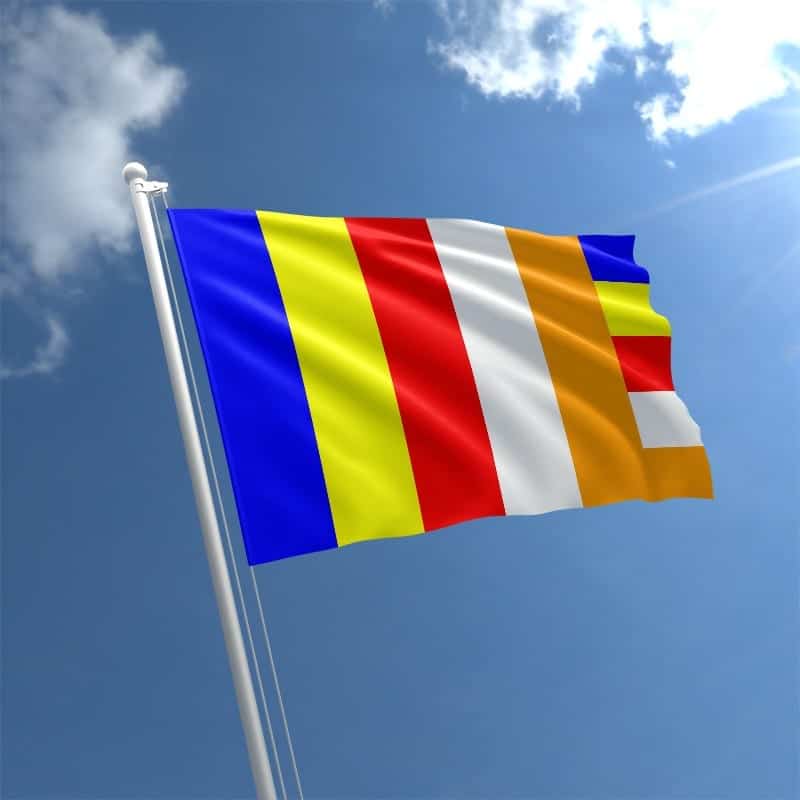Buddhist flags flutter around temples and monuments throughout the world today. And banners and flags have always waved above important Buddhist monuments. Early texts describe pilgrims donating colorful banners at stūpas and monasteries. Yet, the six-striped flag we see today is a modern development.
The following is an excerpt from Khenpo Gyaltsen’s A Lamp Illuminating the Path to Liberation: An Explanation of Essential Topics for Dharma Students. Khenpo explains how modern Buddhists chose the colors of this flag.
Generally speaking, flags are used to display a group’s excellent qualities and to express their individuality. But specifically, a flag’s utility is to express one’s identity, and to indicate victory and success. For the same purpose, the Buddhist flag was created with this intention. In 1884, the Buddhist flag was created in Sri Lanka by the American military officer, Mr Henry Steele Olcott, on Lord Śākyamuni’s birthday.
The flag has six colors representing the six colored lights that the Buddha radiated at the time of complete enlightenment. The colors of the flag were decided upon in 1956 after six conferences were held in friendship among the Buddhist community in Burma.
The meaning of the six colored stripes of the flag in subsequent order are: (1) The blue stripe represents the blue light-rays that radiated from the Buddha’s hair. These pervaded the whole cosmos with love, compassion, peace, and happiness. (2) The gold stripe represents the golden light-rays that radiated from the Buddha’s skin. This displayed the Middle Way, free from the extremes of permanence and nihilism. (3) The red stripe represents the red light-rays that radiated from the Buddha’s flesh. This displayed excellent realization from practice and virtuous merit. (4) The white stripe represents the white light-rays that radiated from the Buddha’s bones and teeth. This displayed genuine accomplishment without flaws or stains, along with the truth that the Buddha’s teachings on the nature of liberation are ever-present, whether in an excellent or empty kalpa (meaning whether the Buddhas teach or whether no Buddhas are present). (5) The orange stripe represents the orange light-rays that radiated from the Buddha’s palms, heels, and lips. This displayed the power of wisdom and the majestic brilliance of the dharma’s rich essential meaning. (6) The last stripe of combined colors represents the universal truth of the Buddha’s teachings. The horizontal stripes represent the world’s people in harmony, peace, and happiness. And the vertical stripes show the continuous tranquility of the Buddhist community.
The Buddhist flag in its entirety signifies the indivisibility of all sentient beings regardless of situation, race, nationality, class, color and so forth. For all sentient beings have within them the seed of omniscience and each has the capacity and potential for enlightenment.
Khenpo Gyaltsen, A Lamp Illuminating the Path to Liberation: An Explanation of Essential Topics for Dharma Students, pp. 249-51.




